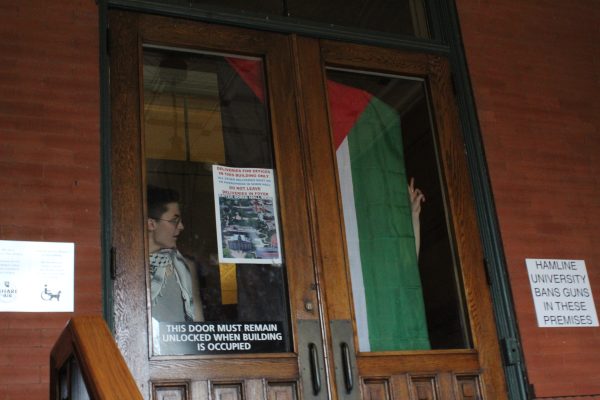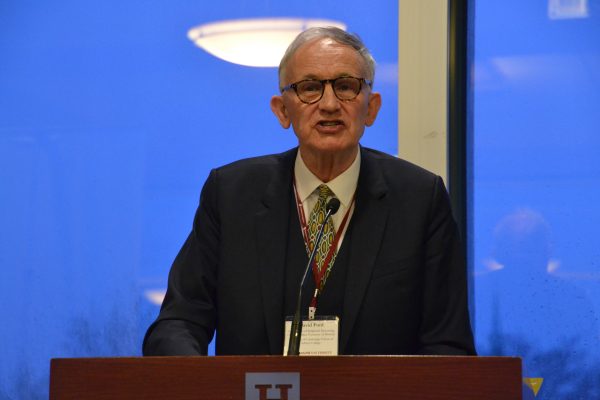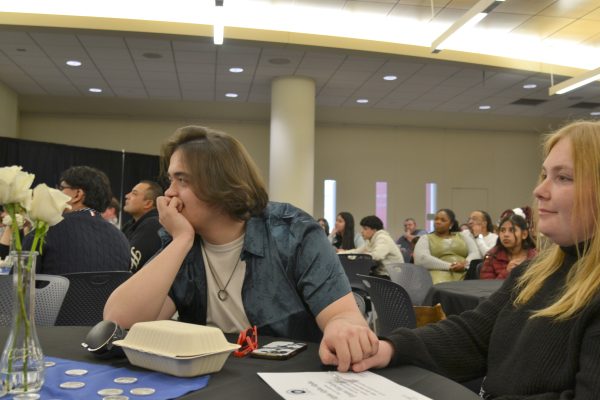Let the Voices be Heard
The Listening Circle continues to be a welcoming environment for all.
October 4, 2017
The supportive collaboration of staff, students and faculty called the Listening Circle, makes a comeback this fall after an eventful summer of hard work and careful planning. On Tuesday, September 21, the first meeting of the semester took place in Anderson Center.
A quiet but welcoming environment, the meeting was lead by Dean of Students, Patti Klein, Deputy Title IX Coordinator, t. aaron Hans, and Interim Provost John Matachek and Associate Dean of Students, Carlos Sneed.
The Listening Circle had been a result of student body concerns last spring and is an open, sanctioned environment for discussions on any topic or affair. This is a place where students can openly voice their opinions to faculty and staff, and vice versa.
“The purpose of the Listening Circles are discussing and listening to student concerns, how the campus can be improved and to be ready to solve the problems of today, tomorrow, next week and next month,” Matachek said.
After its creation in spring of 2017, the Listening Circle formed four working groups and focus points for maximum improvements that includes the Campus Climate, Classroom Dynamics, Recognition and Resources for Local, National and International Concerns, and Navigation. Carlos Sneed voiced a powerpoint presentation set up at the Listening Circle that provided some information on what these working groups have done over the last few months.
“The Listening Circle also stemmed from sexual assault discussions, DACA, and other important events,” said Patti Klein.
Starting off with the Campus Climate, the report describes the group’s work in gaining direct support for individuals of color, the LGBTQIA+ group, immigrants and religion. They have also created spaces for development, advocacy and inclusion issues. They have made opportunities for programming and developed a mission to align Hamline and put this school on track to match its diversity values. The new goals consist of creating more support and publicizing diversity opportunities using websites and calendars that promote and communicate their mission. Classroom Dynamics worked on getting feedback to faculty from the students so they can improve classroom conditions and the communication methods. They have elevated the level of faculty training and intend to have classes taught by marginalized people or those of color. In Recognition and Resources for Local, National and International Concerns, the team is working on constructing and advocacy position for students, almost like a social worker who will work through the Dean of Students. They want more translators as well to help with student transition processes. Within the Navigation section, work toward a DACA response, food justice, communication materials and a senior diversity position was completed.
Most of this first meeting was taken up by reports of the effort and elbow grease put in this summer by the working groups. These groups were made up by a medley of staff, faculty and students.
“We need to respond to when things happen and be prepared to do something,” Klein said.
There was some discussion towards the end of the meeting, where many students voiced their concerns about involvement. Students want diversity to be held up on a higher pedestal, and to enhance the promotion of the Listening Circle itself. If more students are in attendance, it means a wider variety of opinions and thoughts on the issues that arise. They want more power and involvement in the working groups and diversity initiative programs.





